![]()
![]()
![]()
Use LEFT and RIGHT arrow keys to navigate between flashcards;
Use UP and DOWN arrow keys to flip the card;
H to show hint;
A reads text to speech;
16 Cards in this Set
- Front
- Back

Begin by scraping the plates |
Scrape off any remaining food as soon as you can so it doesn’t stick
larger pieces of food will block the drain of the sink or dishwasher, so this food must be discarded before you can begin cleaning
If you have a garbage disposal, show your child how to put leftover food in it safely. Instruct them as to what can and cannot be put into the garbage disposal, and that cold water should be running at all times when the garage disposal is running. |
|
|
When you’re done using a plate, glass, or cooking dish, scrape off the food remnants into the trash |
Use a fork to push food off into the trash You can also scrape food into the sink and run it down the garbage disposal with some water. |
|
|
Try not to let dishes stack up,especially overnight |
the food will start to lose moisture and stick to the surface, making it much more difficult to clean off by hand |
|
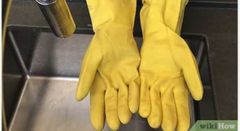
4/ Pull on some rubber gloves for safety and comfort |
Rubber dishwashing gloves 1)Will keep you clean by protecting your hands from grease and food. 2)Will help you avoid getting nicked by sharp knives or forks |
|
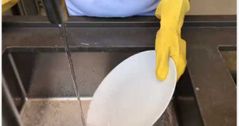
Turn the hot water on in your sink in: |
A low steady stream and pour soap onto your sponge to work into a lather. |
|
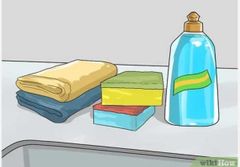
Prepare the necessary tools for washing the dishes |
You'll need warm water, dish soap, two sponges and two towels. For more difficult dishes, you can use plastic scrubbers or steal wool pads |
|
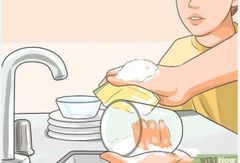
Begin by cleaning your glasses, plates and bowls |
These are typically the least dirty of all the dishes, so its a good idea to start your child off by cleaning these. First, instruct your child to submerge the dirty glass, plate or bowl into the soapy water or under the running water |
|

Next |
Dip each dish in the soapy water and scrub it with a sponge. Squirt some extra soap onto your sponge. Grab a dish and start scrubbing gently but firmly until all food residue has been cleared |
|

Tip |
Start scrubbing at the back or bottom of the plate or glass and move towards the eating and drinking surfaces last. This will help you avoid spreading germs on accident. |
|
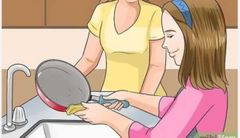
Clean the cooking dishes next |
These are often more dirty, with stains and leftovers that are much more difficult to scrub off |
|
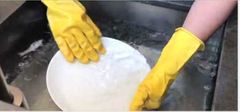
Rinse each dish |
Swish it around in the water to clear off all the soap suds. |
|
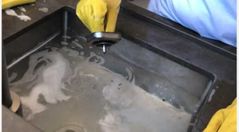
Drain and refill the water when you notice it getting dirty or greasy |
Ggh |
|
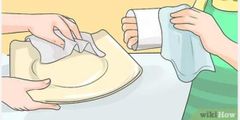
Dry the dishes |
Once all dishware and cooking dishes have been washed and rinsed, its time to |
|
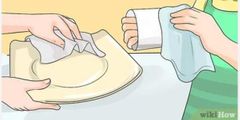
Dry the dishes |
Once all dishware and cooking dishes have been washed and rinsed, its time to |
|
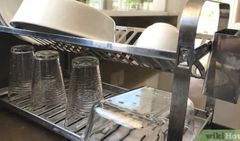
Set the dishes in a dish rack to dry |
Set cups and bowls into the dish rack upside down to let water drain out, and set plates and silverware upright. |
|
|
Tip for dry dishes |
You should use a dish rack for as many dishes as you can; drying with a towel can spread bacteria |

